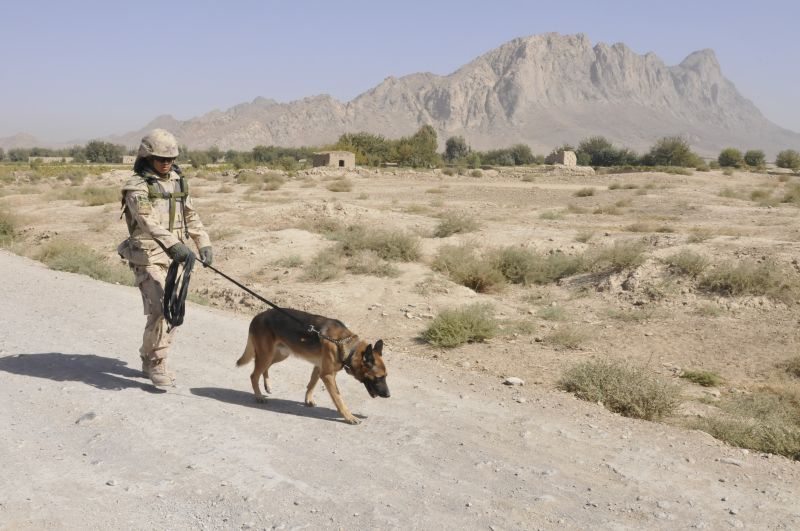Soldiers of the U.S. Army’s Military Police Corps newest military occupational specialty are making history on Fort Leonard Wood.
The inaugural company of 31 Kilos, Military Working Dog Handlers, is about to finish phase one of Advanced Individual Training, referred to as AIT.
The Soldiers are learning the duties and all-around responsibilities of military police from seasoned military working dog handlers.
However, they won’t see or be paired with their furry battle buddies until they transition to the second phase of training at Joint Base San Antonio-Lackland, Texas.
“Fort Leonard Wood is where the new Soldiers meet the leaders of their MOS (military occupational specialty). They are learning what it means to be a 31K from their MOS’s subject matter experts. This is where it all begins — right here — at the home of the regiment,” said Capt. Eric Luley, Company C commander, 701st Military Police Battalion.
Last month, U.S. Army military police dog handlers officially received their new canine-specific MOS.
In the past, working with military dogs was considered an additional skill for the 31B Military Police MOS.
To gain the additional duty of military working dog handler, Soldiers had to be an MP for two years before being selected to train with canines.
The new MOS has changed that.
The 19 Soldiers in training, and first from the ground-up 31K Military Working Dog Handlers in Company C, are nearing the end of their Advanced Individual Training. They have completed nine weeks of Basic Combat Training and are about to culminate seven weeks of AIT.
Staff Sgt. John Thomas, Company C, squad leader and instructor, was specifically assigned to the unit, because he was one of the Soldiers who recently reclassified from being an MP with the additional dog-handler skill, to becoming a full-fledged dog handler.
“We are teaching them all the requirements they need to become a military policeman,” Thomas said. “They will train with the 9mm, learn detainee operations, how to make traffic stops and how to respond to an active-shooter, just to name a few.”
Military police usually graduate after nine weeks of basic combat training and nine weeks of AIT under the instruction of drill sergeants. However these Soldiers, training to work with dogs, left their drill sergeants behind after basic training.
“In our MOS, we deploy as individual augmentees. So, as a squad leader, I am entrusting these brand new Soldiers with responsibilities that I’ve seen staff sergeants struggle with down range. They have to develop personal responsibility in this environment,” Thomas said.
Pvt. Cameron Goodin, Company C, said he was looking forward to serving as a military police officer, but when his recruiter mentioned the new canine MOS, he said he knew that would be a perfect fit for him.
“Now, I get to work with canines and be an MP,” Goodin said.
“I am proud to be one of the first Soldiers to go through this class right out of basic training. I feel very fortunate to be one of the few who are able to experience it this way,” he added.
When Goodin and his battle buddies complete and graduate from AIT next month, they will depart Fort Leonard Wood en route to Joint Base San Antonio-Lackland.
In Texas, they will train with canines for 11 weeks before being assigned to their units.
“I think it is a great opportunity for our Soldiers. They can all come through here together and build camaraderie. Even though they will go their separate ways after graduation, the MOS is so small they will run into each other one day,” Luley said.
Military police working dogs are primarily used for narcotics or explosive detection and military patrols.
The Department of Defense Military Working Dog program, the world’s largest training center for military dogs and handlers, has been based at Joint Base San Antonio-Lackland, since 1958.
The DOD Military Working Dog Veterinary Service and the Holland Working Dog Hospital, the largest for military working dogs, are also located on Joint Base San Antonio-Lackland.
Military working dog handlers are responsible for the care and training of his or her service dog, which contributes to combat operations abroad and installation security at home by providing target odor detection. Service dogs, generally seen as a non-lethal option for neutralizing a threat, also serve as a psychological deterrent during law enforcement operations.
According to Luley, the Army currently has approximately 500 military working dog handlers.










